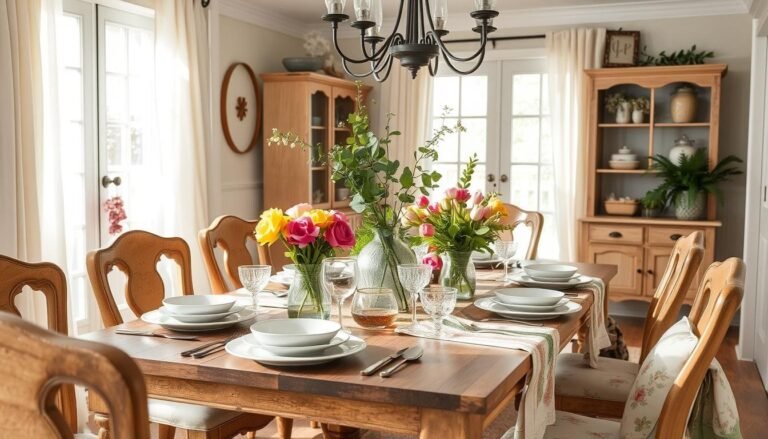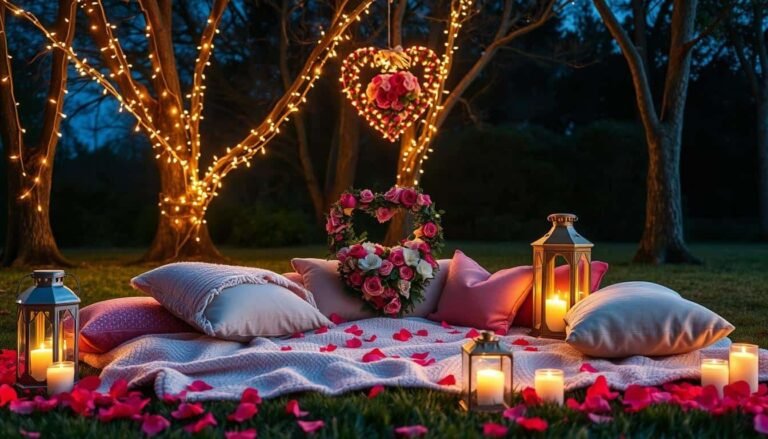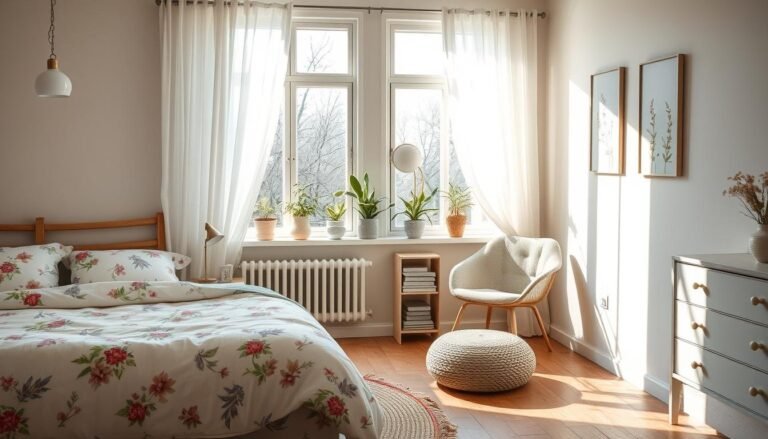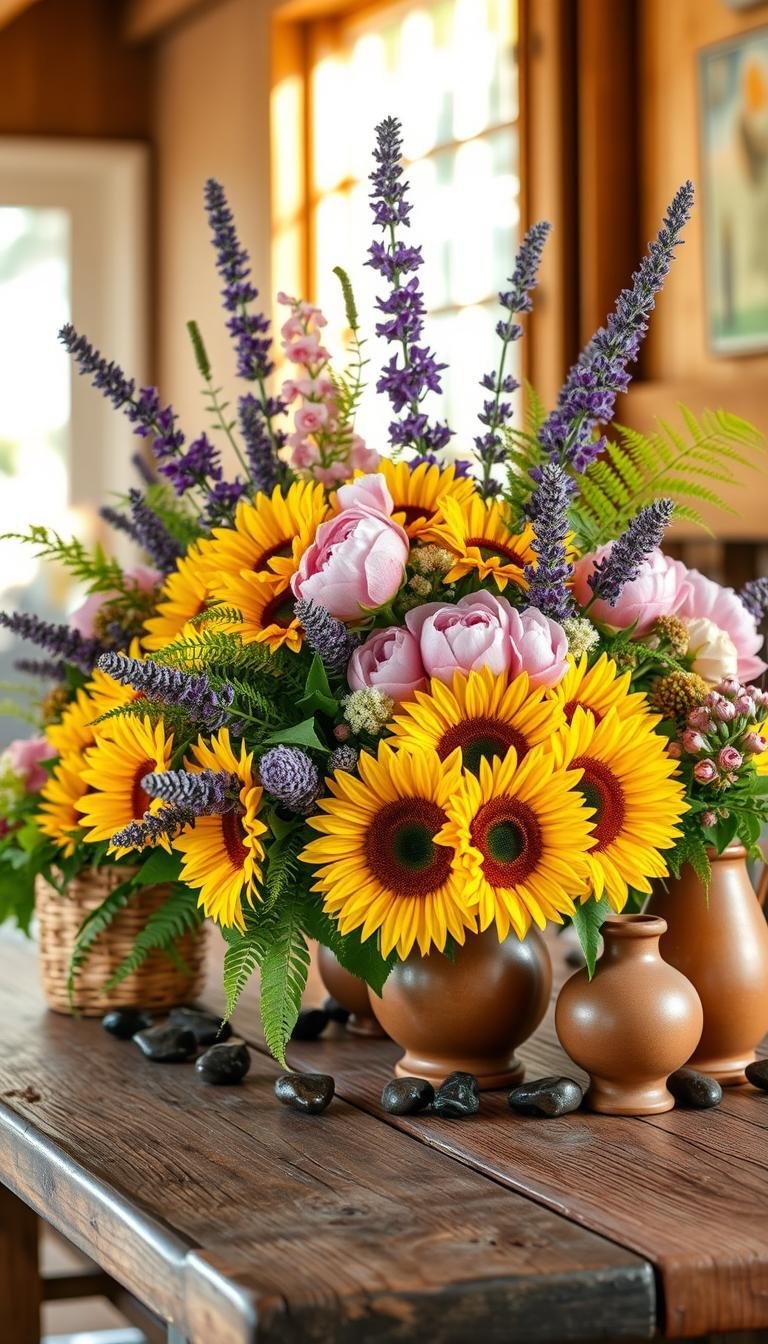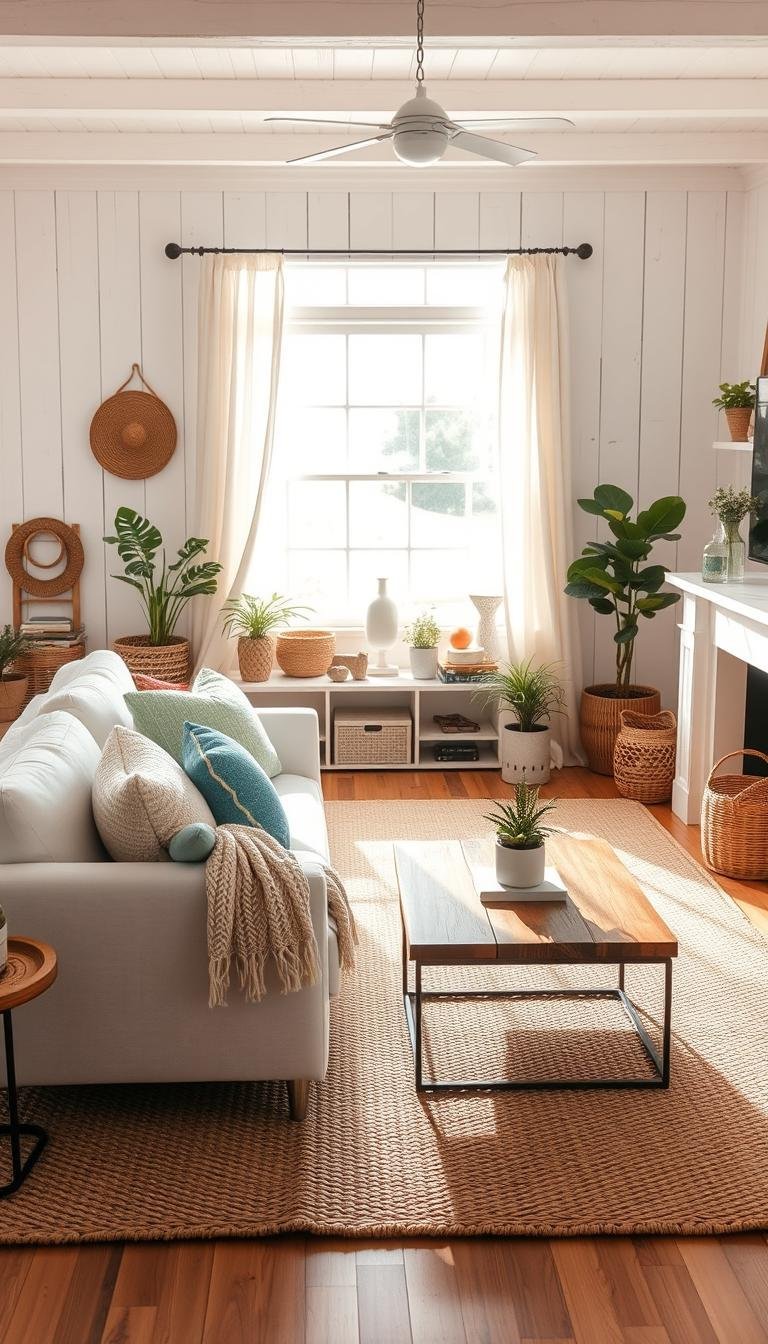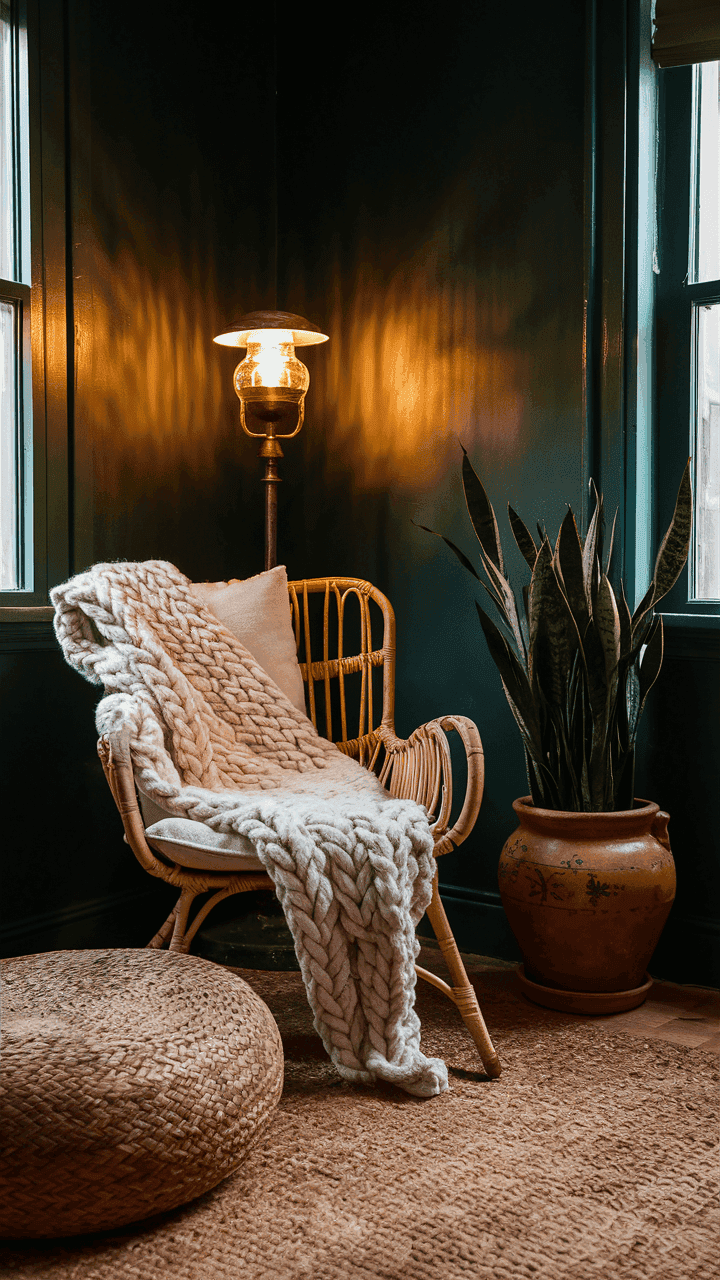How to Mix and Match Patterns in Home Decor Like a Pro
This post may contain affiliate links. As an Amazon Associate, I earn from qualifying purchases. If you click and buy, we may earn a small commission at no extra cost to you. Learn more.
Mixing patterns in home decor can make a room more interesting and personal. It’s an art that takes practice, but with a few tips, you can achieve a unique look. Combining patterns like stripes, dots, and florals adds depth and texture, making a room feel cozy.
By mastering pattern mixing, you can create a space that shows off your style. It will make you feel happy and relaxed.
To start mixing patterns, you need to understand how they work together. It’s about creating a cohesive look by combining different patterns. You can choose patterns that share a color or theme, or mix patterns with different scales and textures.
Experimenting with different patterns can help you find a look that suits your home. It lets you incorporate your favorite patterns and styles.
Contents
- 1 Understanding the Basics of Pattern Mixing
- 2 Choosing a Color Palette
- 3 Creating Focal Points with Patterns
- 4 Mastering the Art of Contrast
- 5 Using Patterns in Different Decor Elements
- 6 Tips for Pattern Mixing in Small Spaces
- 7 Seasonal Adaptations in Pattern Mixing
- 8 Common Mistakes to Avoid
- 9 Inspiring Examples of Pattern Mixing
Understanding the Basics of Pattern Mixing
Starting with a solid foundation is key when mixing patterns. It’s important to know the different types of patterns like stripes, polka dots, and florals. These basics help create a space that looks good and feels right.
One main rule is to balance color and pattern. You can do this by picking patterns that share a color or using one color to connect them. For instance, a bold striped sofa can be balanced with solid-colored walls and accents. This way, your space can look unique and special.
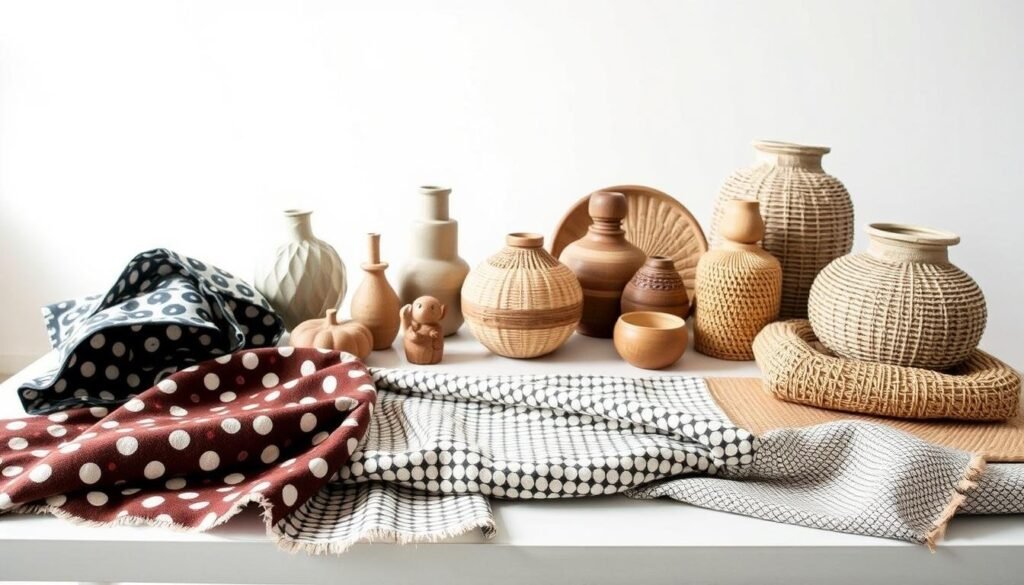
Types of Patterns to Consider
- Stripes: horizontal, vertical, or diagonal
- Polka dots: small, large, or multicolored
- Florals: traditional, modern, or abstract
Color vs. Pattern: Finding Balance
Color plays a big role in mixing patterns. Choose patterns with a common color or use a dominant color to link them. This is a key principle that’s often missed.
Scale Matters: Large vs. Small Prints
The size of patterns is also important. Big prints can make a bold statement, while small ones add texture and interest. Mixing large and small prints can make your space unique and show off your style.
Choosing a Color Palette
Choosing the right colors is key in pattern mixing fashion. A good color palette can make your space look better and feel more harmonious. Start by learning about color theory and how it applies to mixing patterns.
Choose a main color that ties everything together. Use this color in most of the patterns and fabrics. Neutral colors like beige, gray, or white work well as they provide a calm background. Then, add accent colors to add depth and interest.

- Consider the natural light in the room and how it will affect the colors
- Think about the mood and atmosphere you want to create
- Don’t be afraid to experiment and try out different combinations
By following these tips and understanding color theory, you can create a beautiful space. It will showcase your favorite pattern mixing ideas and fashion trends.
Creating Focal Points with Patterns
Designing a room means making it stand out. A pattern mixing outfit can highlight certain areas, making the room more eye-catching. To do this, you need to know how to use bold pieces and mix patterns around a key point.
A statement piece, like a bold-patterned sofa or a vibrant rug, is the base of your pattern mix. After setting your central piece, add other patterns around it. This could be throw pillows, blankets, or a statement wall with a matching pattern.
Layering Patterns for Visual Interest
To get a cohesive look, follow these tips for layering patterns:
- Begin with a neutral base to avoid overwhelming the space
- Choose patterns that complement each other in scale, color, and texture
- Don’t be afraid to mix different patterns, like stripes, florals, and geometrics
By using these tips and trying out different combinations, you can make a space that’s both unique and stylish. Remember, have fun and be creative. Don’t be afraid to try new things and make mistakes.
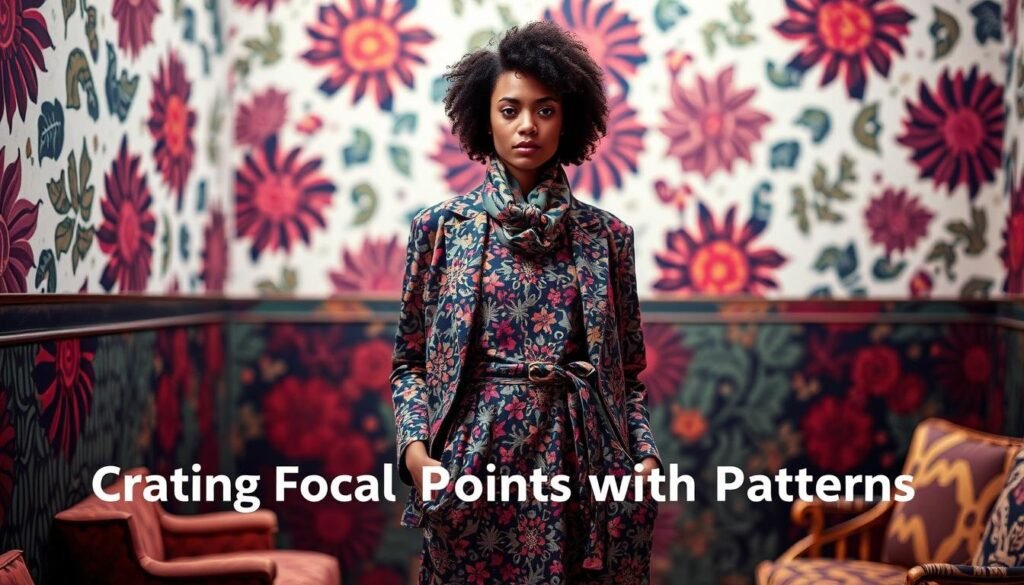
Mastering the Art of Contrast
Creating a visually appealing space starts with mastering contrast. A good pattern mixing guide shows how to balance elements for harmony. By mixing patterns, you add depth and interest, making a room feel dynamic and welcoming.
Complementary patterns are key to contrast. Pairing patterns with opposite qualities, like bold and subtle, or light and dark, is essential. For example, a bold stripe with a subtle floral or a light geometric with a dark solid color works well. This contrast adds visual interest and depth.
Mixing Complementary Patterns
When mixing patterns, scale and proportion matter. A large pattern can overwhelm a small one. Use a guide to find the right balance. This ensures your patterns work well together.
The Role of Texture in Contrast
Texture is also vital in contrast. Mixing textures like smooth and rough, or soft and hard, adds depth. Combining different textures with patterns creates a rich, engaging space. For example, a smooth leather sofa with a rough rug or a soft velvet pillow with a hard chair works well.
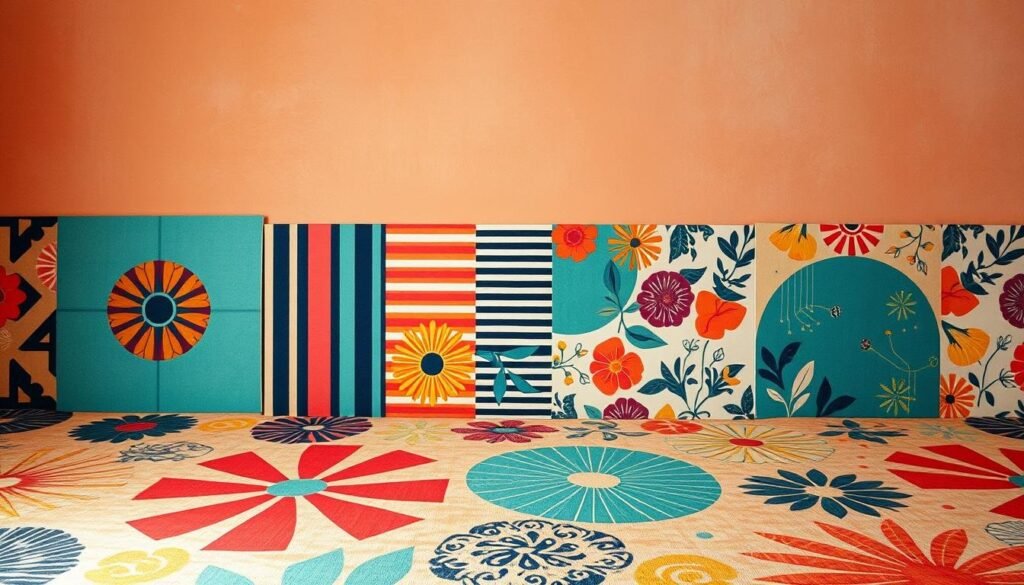
Mastering contrast and using a guide can make your space beautiful and functional. Balance elements, consider scale and texture, and experiment with patterns. With practice, you’ll master pattern mixing and create a space that shows your style and personality.
Using Patterns in Different Decor Elements
Using patterns in various decor elements is key to a beautiful space. When mixing patterns, think about the different parts of a room. Elements like upholstery, curtains, rugs, and accessories all play a big role in the look of a room.
In pattern mixing fashion, picking the right patterns is important. Choose patterns that match in color, size, and texture. For example, a bold sofa can go with a soft rug. A striking piece of art can add color and texture too.
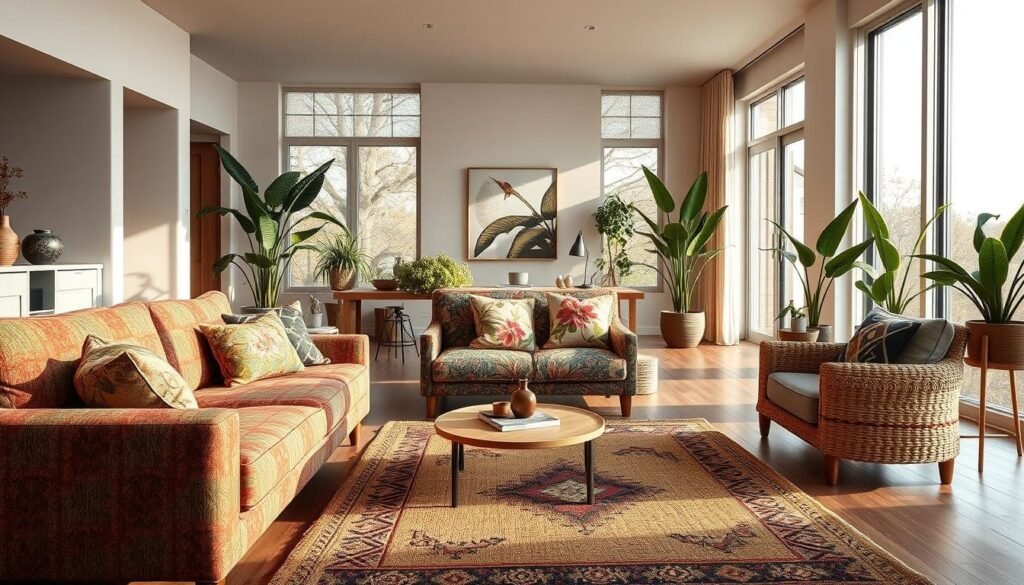
Upholstery: Sofas and Chairs
Upholstery is a great way to add patterns to your space. A patterned sofa or chair can be the room’s centerpiece. A plain ottoman or coffee table can provide a calm background. Think about the pattern’s size and how it fits with other patterns in the room.
Curtains and Rugs: Grounding Your Space
Curtains and rugs can make your space feel grounded and add texture. A patterned curtain can add elegance, while a patterned rug can mark the seating area. When picking patterns for these, think about how they’ll work with other patterns in the room.
Accessories: Pillows and Artwork
Accessories like pillows and artwork can complete your room. A patterned pillow can add color and texture, while art can be a focal point. When choosing patterns for these, think about the look you want and how the patterns will come together.
Tips for Pattern Mixing in Small Spaces
Learning to mix patterns in small spaces is key to avoid feeling cramped. It’s important to keep things simple and not too busy. This helps make small areas feel bigger and more open.
Using vertical space is a great way to make small spaces look bigger. Try floor-to-ceiling curtains or shelves. Also, stick to a few colors and mix different patterns and textures. For example, pair a big print with a small geometric pattern.
Practical Tips for Small Spaces
- Start with a neutral base and add patterns through accessories, such as pillows and rugs.
- Use a mix of solid colors and patterns to create visual interest.
- Consider the scale of the patterns and balance large prints with smaller ones.
By following these tips, you can make a small space look bigger and feel more open. The secret is to keep it simple and use vertical space well. With a bit of practice, you can create a stylish and functional small space.
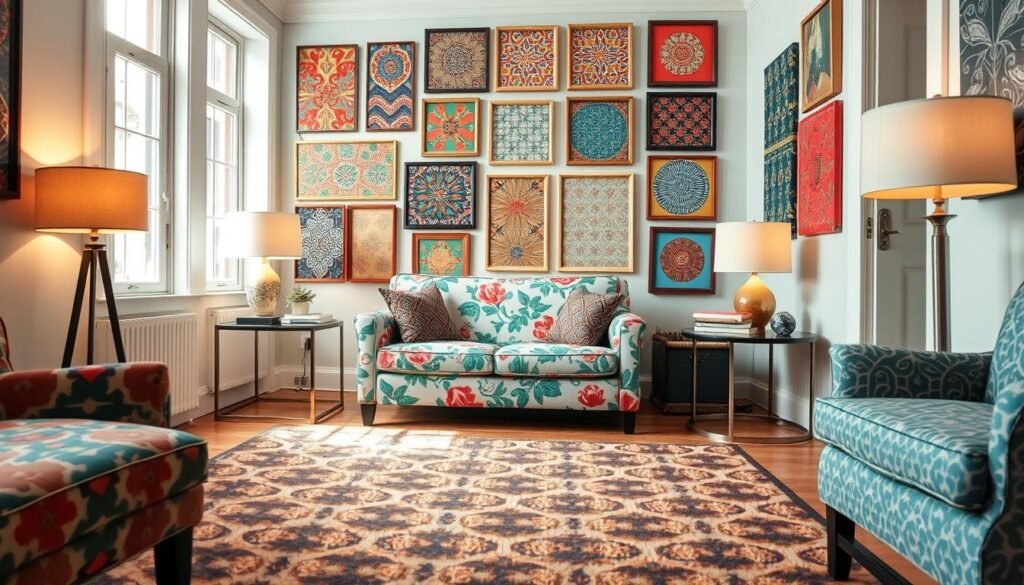
Seasonal Adaptations in Pattern Mixing
As seasons change, our homes can feel old. To refresh your decor, try seasonal pattern mixing. Swap throw pillows or add a new rug with a seasonal pattern. A good pattern mixing guide helps you mix well.
For seasonal mixing, think about the season’s colors and patterns. Winter might need bold patterns like plaid or stripes. Summer is perfect for light patterns like florals or geometric shapes. This keeps your space feeling new and relevant all year.
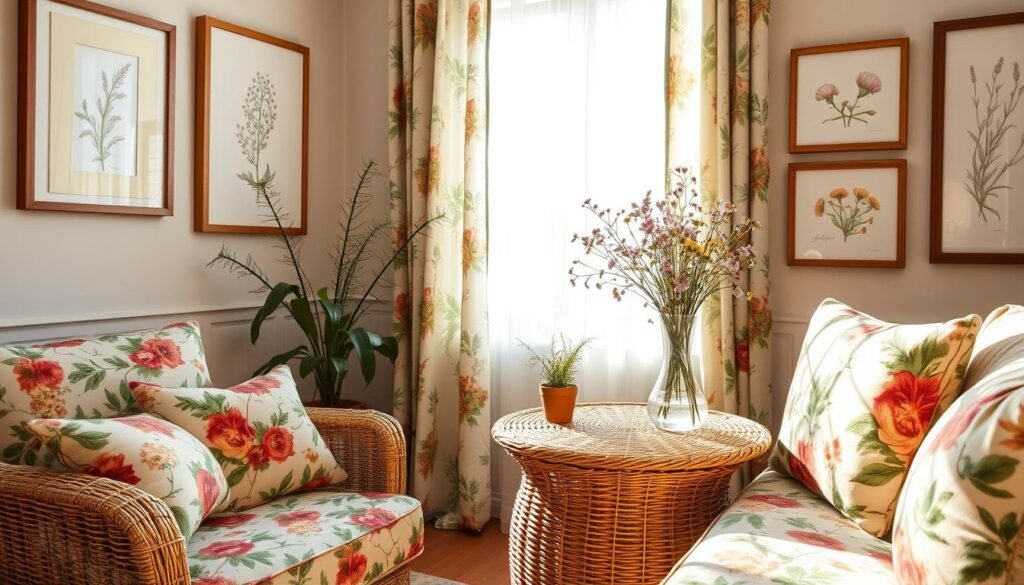
To start, list patterns and colors for each season. Then, think how to add these to your decor. Add seasonal throw pillows or a winter blanket. With a guide and some experimentation, your home stays exciting all year.
Refreshing Your Decor with Seasonal Prints
Seasonal prints are a simple way to update your decor. Add seasonal throw pillows or a rug. This makes your space feel fresh and relevant to the season.
Combining Patterns for Year-Round Appeal
Seasonal mixing is great, but mixing patterns all year is key. Mix patterns and colors for a cohesive, stylish look. A guide and some experimentation make your space beautiful all year.
Common Mistakes to Avoid
Mixing patterns can be exciting, but it’s easy to make mistakes. One big error is using too many patterns at once. This can make a space feel too busy and overwhelming.
To avoid this, think carefully about mixing patterns. Look at the size and how they fit together. Also, think about the overall look you want. If you ignore these, your space might feel unbalanced and messy.
Overloading on Patterns
Don’t use too many patterns in one space. Instead, pair a bold pattern with simpler ones. This creates harmony and balance.
Ignoring Scale and Proportion
Another mistake is not considering pattern sizes. Think about how each pattern’s size will work together. For example, a big pattern with a small one can add interest and balance.
By avoiding these mistakes, you can show off your style in your space. Be thoughtful and intentional when mixing patterns. Don’t be afraid to try new things.
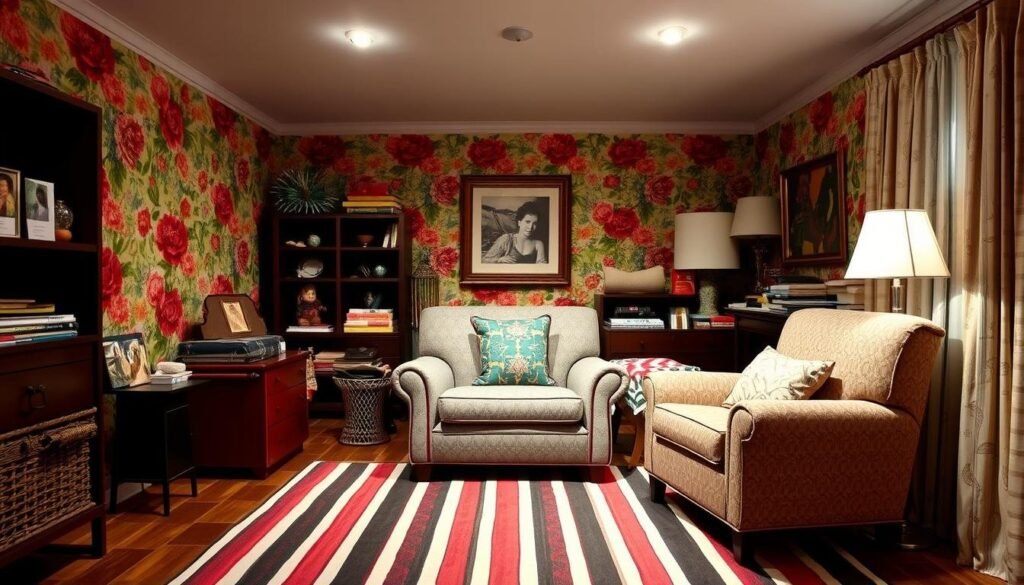
With practice and patience, you can get good at mixing patterns. Whether you’re experienced or new, the most important thing is to have fun and be creative.
Inspiring Examples of Pattern Mixing
Pattern mixing can change a space, adding depth and interest. It also brings a personal touch. Let’s look at some real-life examples to spark your creativity. These examples range from bold and eclectic to subtle and sophisticated.
Viewing Real-Life Interiors
Looking at how others mix patterns can inspire you. Check out Emily Henderson’s living room. She uses a geometric rug, floral curtains, and striped pillows for a lively yet balanced look.
Then, there’s Arielle Charnas’ bedroom. She pairs bold floral wallpaper with a soft striped duvet. This creates a calm yet eye-catching atmosphere.
Learning from Design Experts
Design experts can also teach you a lot. Follow them on social media, read their blogs, or join their workshops. They share tips and tricks for mixing patterns.
Designers like Leanne Ford, Justina Blakeney, and Studio McGee are full of knowledge. They can help you confidently mix patterns in your own space.




